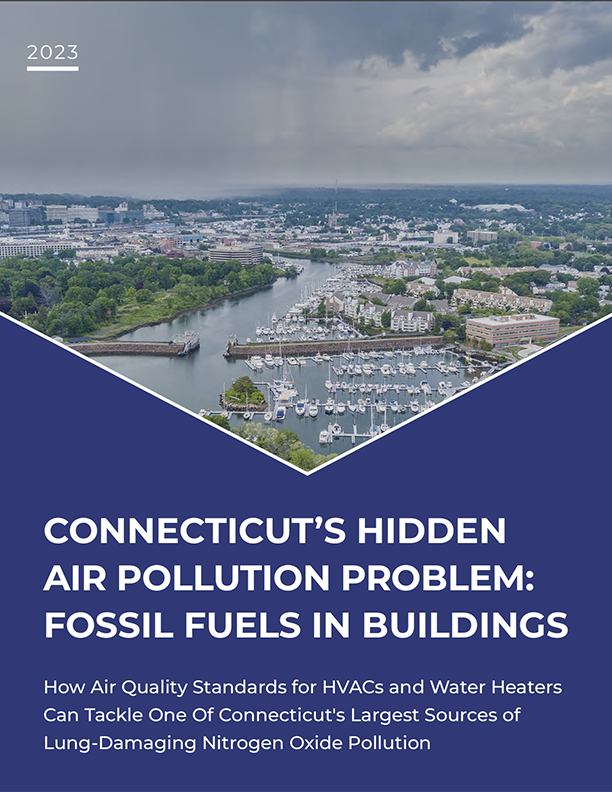 |
2024 Connecticut’s Hidden Air Pollution Problem: Fossil Fuels in Buildings Burning gas, oil, and propane in furnaces and water heaters generates a staggering 23% of Connecticut’s nitrogen oxide (NOx) pollution, more than eight times as much as the state’s power plants. That’s bad news for Connecticut residents’ lungs. This September 2023 report from Save the Sound, Conservation Law Foundation, Sierra Club Connecticut, and RMI illustrates how regulators can gradually eliminate this pollution by setting strong air quality standards for homes and buildings—and that doing so could save residents significant cash over time. |
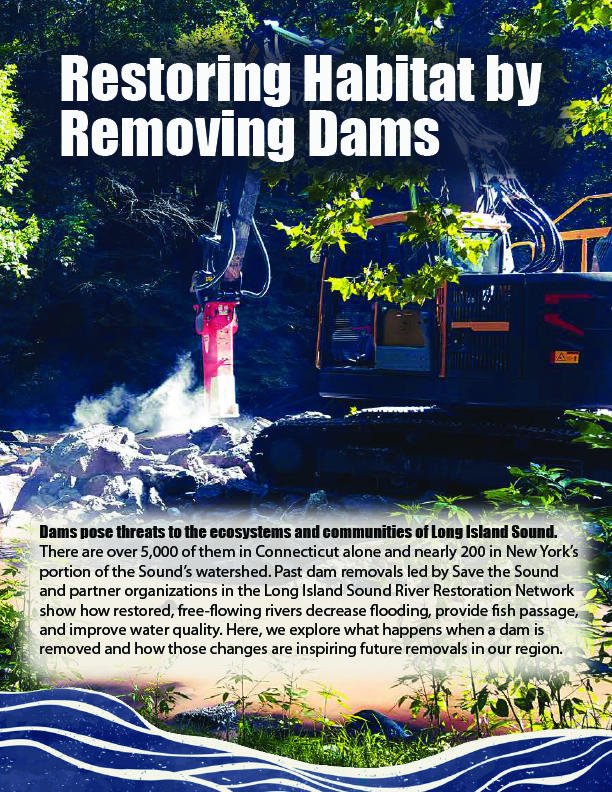 |
2023 Dam Removal Report The Long Island Sound River Restoration Network (RRN), a network of Connecticut and New York-based organizations dedicated to the restoration and health of the region’s rivers, has released their Dam Removal Report. The report summarizes the benefits of removing dams to restore free-flowing rivers in the Long Island Sound watershed and showcases a dam removal site that has rebounded with native flora and fauna. Dams pose several threats to our ecosystems, including interference with the migration of fish species that need to travel between saltwater and freshwater to reproduce. Along with ecosystem interruption, dams pose a threat to nearby communities. Potential dam failure can lead to infrastructure flooding and the release of polluted sediment. The RRN’s Dam Removal Report explores the importance of free-flowing rivers and what happens once a dam has been removed. |
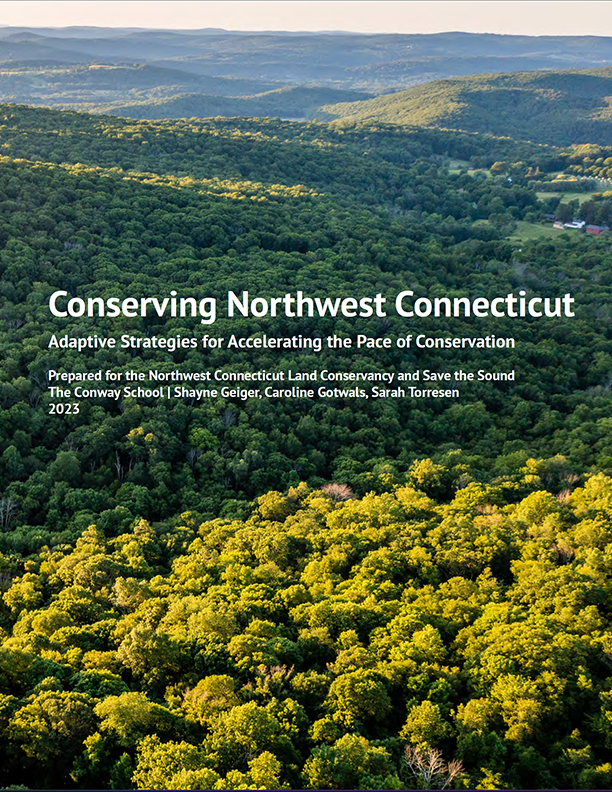 |
Conserving Northwest Connecticut: Adaptive Strategies for Accelerating the Pace of Conservation This innovative report documents the region’s conservation efforts and reveals strategies for accelerating the pace of conservation as part of the global initiative to conserve 30% of the Earth’s lands and waters by 2030, also known as 30×30. To meet the 30 x 30 goal in Northwest Connecticut, the report found, there can be no net loss of quasi-protected lands, and the land trust community must protect an additional 7,500 acres. Based on the report’s findings, creating the tactical roadmap for that increased land conservation will involve weighing three interconnected considerations—ecological, economic, and equitable. Conserving Northwest Connecticut was written in partnership with the Conway School of Landscape Design, with guidance from Connecticut Land Conservation Council, Follow the Forest (a program of the Litchfield Hills Greenprint Collaborative), Save the Sound, and The Nature Conservancy, with significant input from the region’s local land trusts and Councils of Government. |
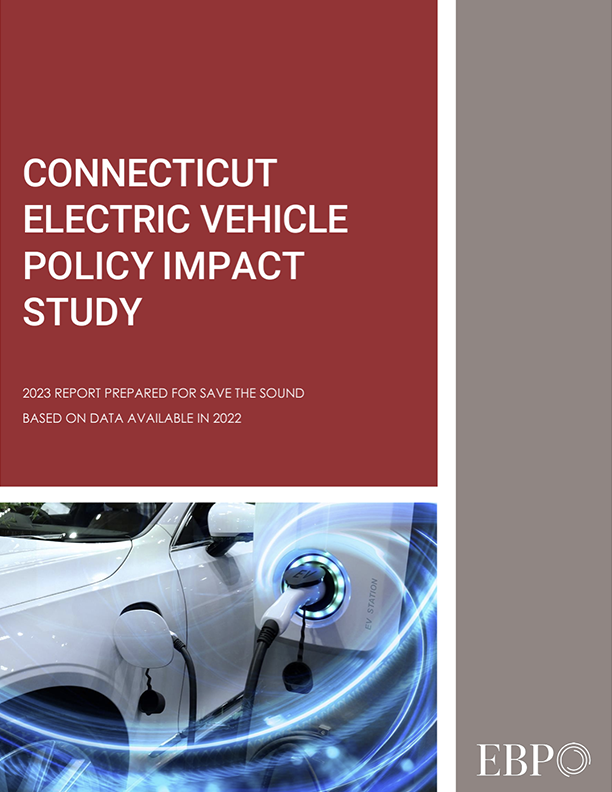 |
2023 Connecticut Electric Vehicle (EV) Policy Impact Study This report examines expected economic impacts from transitioning Connecticut’s motor vehicle markets from fossil fueled Internal Combustion Engine (ICE) vehicles to a fleet of alternatively fueled vehicles, such as electric vehicles. This transition will achieve substantial reductions in greenhouse gas and criteria pollutant emissions, producing significant public health benefits and an energy-efficient economy. The Connecticut transportation transformation will result in changes in the state’s economy, providing opportunities for economic development while adjusting the make-up of jobs and professions that serve the transportation industry. The analysis examines the market from several perspectives to provide Connecticut stakeholders with clearer expectations of how the economy will change as a result of the transition to clean electric vehicles, and what the changes will mean for Connecticut. |
 |
Connecticut Cleanup Report 2023 Since 2002, Save the Sound has hosted the Connecticut Cleanup as part of the Ocean Conservancy’s International Coastal Cleanup. We support up to 75 cleanups annually across the state, working with local volunteer Cleanup Captains to host events at parks, beaches, and rivers. Each year, more than 2,000 volunteers pick up several tons of trash, tracking each piece so we can understand trends in marine debris and contribute to the global effort of stopping it at its source. This summary of six years of that data highlights the most common types of plastic on the ground and in the Sound. Learn More. |
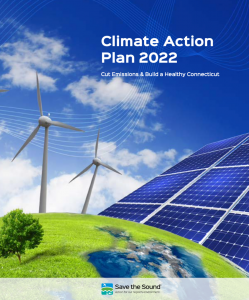 |
Climate Action Plan 2022: Cut Emissions & Build a Healthy Connecticut If you’ve ever wondered what the Connecticut state government can do right now to fight climate change, this is the guide you need. “Climate Action Plan 2022: Cut Emissions & Build a Healthy Connecticut,” a collaboration between Save the Sound and The Yale Center on Climate Change and Health, examines the electricity, transportation, and buildings sectors in Connecticut—as well as cross-sector considerations and social factors—to identify a short list of critical policies that our legislature should pass to ensure the state meets its greenhouse gas reduction targets in an equitable way. |
Your Nature-Based Community Resilience Solutions
Coastal Connecticut is already experiencing climate change impacts; fortunately, nature has evolved resilient systems that are highly effective at protecting us from worsening storm surges and heavy rainfalls. These nature-based solutions withstand storm impacts better than concrete, are frequently very cost effective, and are often self-regenerative. This spring 2021 agenda identifies 18 top coastal resiliency opportunities from Guilford to Fairfield.
Protecting Connecticut’s Future: Overcoming the 2022 Environmental Cliff
This March 2021 report spotlights the impending retirement cliff that could see the Connecticut Department of Energy and Environmental Protection lose a quarter of its staff by July 2022. We examine the threat of lost staff capacity and expertise, and make recommendations for urgent planning to avert damage to critical programs including environmental enforcement. (See factsheet with highlights.)
Long Island Sound Beach Report (biennial)
Our biennial Beach Report, most recently released in June 2023, examines water quality at 200+ public and private Long Island Sound beaches. It reveals trends both positive and negative, and is a resource for residents looking for a clean place to swim and for decision-makers identifying opportunities for clean water investments.
Long Island Sound Report Card (biennial)
The biennial Long Island Sound Report Card tracks the ecological health of Long Island Sound, using water monitoring data and an assessment methodology designed for the Report Card to issue water quality grades for five open water regions of Long Island Sound and 57 bay segments along its margins. We provide the results to elected officials, environmental agencies, and the general public as part of our ongoing work to catalyze improvements in ecosystem health and promote restoration projects and infrastructure investments. All grades in the 2024 Long Island Sound Report Card result from monitoring data collected during the 2023 monitoring season
NYC Nitrogen Report: East River and Long Island Sound
Excess nitrogen from sewage treatment plants on the East River still profoundly affects Long Island Sound. This report, based on 2017 research by Dr. Jamie Vaudrey of the University of Connecticut, highlights the importance of NYC continuing to cut its nitrogen inputs.
Plum Island: A Connecting Landscape of History, Nature, Learning
Soon after the federal government passed a law in 2008 that triggered the planned sale of Plum Island at public auction, the Preserve Plum Island Coalition was formed to fight for the preservation of the island’s critical natural habitats and unique history, along with the adaptive reuse of the animal disease research center. This brochure offers an easy glimpse of the current, updated vision for Plum Island.
Envision Plum Island: A Connecting Landscape of History, Nature, Research
From 2018 to 2019, the Preserve Plum Island Coalition and 160 stakeholders from diverse fields embarked on a structured planning process called Envision Plum Island. Together they developed a vision and plan for the island’s future with broad local and regional consensus. The fruits of that envisioning process included the Envision Plum Island report, which provided a detailed review of the planning outcomes. Please note some elements of the 2020 (72-page) plan no longer are pertinent or considered viable. See the brochure above (Plum Island: A Connecting Landscape of History, Nature, Learning) for an easy glimpse of the revised Plum Island vision.
Plum Island: Data Gaps in Cleanup Planning
Dermody Consulting reviewed studies of contamination on Plum Island and identified data gaps in groundwater testing, soil vapor testing, and more. The federal government must work with the State of New York to develop a cleanup plan that meets the state’s environmental standards.
Increasing the Connecticut Renewable Portfolio Standard
Connecticut stands to gain much by setting aggressive targets for renewable energy growth. This 2017 analysis by Synapse Energy Economics identifies climate, jobs, and public health benefits from strengthening the state’s Renewable Portfolio Standard.
West River Watershed-Based Plan
Save the Sound led a community effort in 2015 to develop a watershed-based plan for the West River, to reduce water pollution and guide future uses and protections. Our ongoing construction of residential rain gardens and roadside bioswales throughout western New Haven advance the plan’s goals.
New York’s Sewage Treatment Plants
In 2014, Save the Sound released A Safe and Healthy Sound, a progress report and interactive map on New York’s sewage treatment plants on Long Island Sound. The report reviewed the plants’ progress towards their 2017 deadline for limiting excess nitrogen outputs.
Green Infrastructure Feasibility Scan
A feasibility scan was conducted to evaluate opportunities to reduce stormwater runoff pollution in Bridgeport and New Haven by incorporating green infrastructure. This 2012 study serves as a foundation for more detailed planning and design efforts.
Save the Sound joined with the Long Island Sound Study in 2011 to complete SoundVision, a long-range plan and two-year citizen action agenda for re-energizing restoration and preservation work on Long Island Sound.
In 2011, Save the Sound released State of the Sound, a first-of-its-kind comprehensive overview of accomplishments, restoration goals, and emerging challenges facing Long Island Sound.
Green Jobs for a Vibrant Connecticut
Building Connecticut’s Economic & Environment Future, released in 2010, highlights green sector initiatives that would leverage federal, state, and private dollars to put Connecticut back to work and help make our state a competitive, clean, and vibrant place.
A Better Connecticut through Improved Bus Transit
This report, developed in 2007, lays out a vision still applicable today: a path to increased investment in our bus system that would lead to job access and cleaner air.
